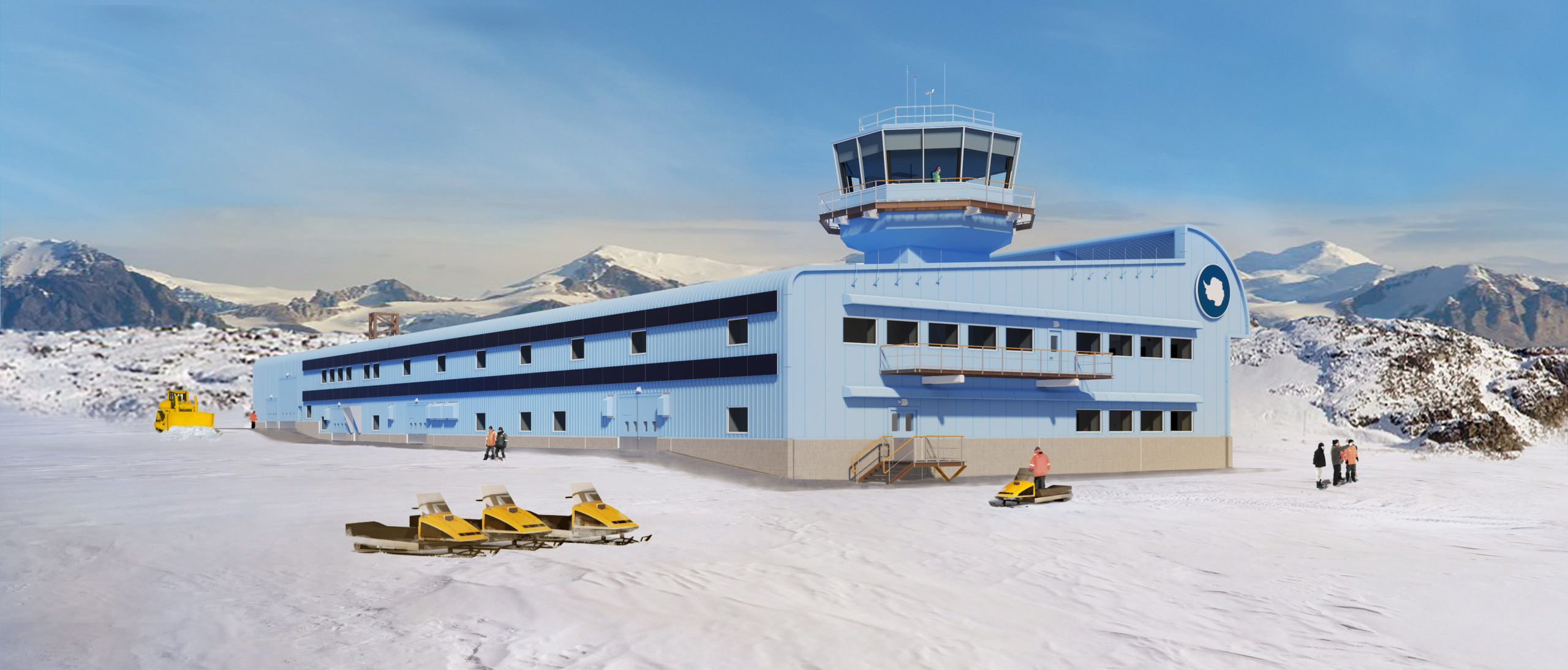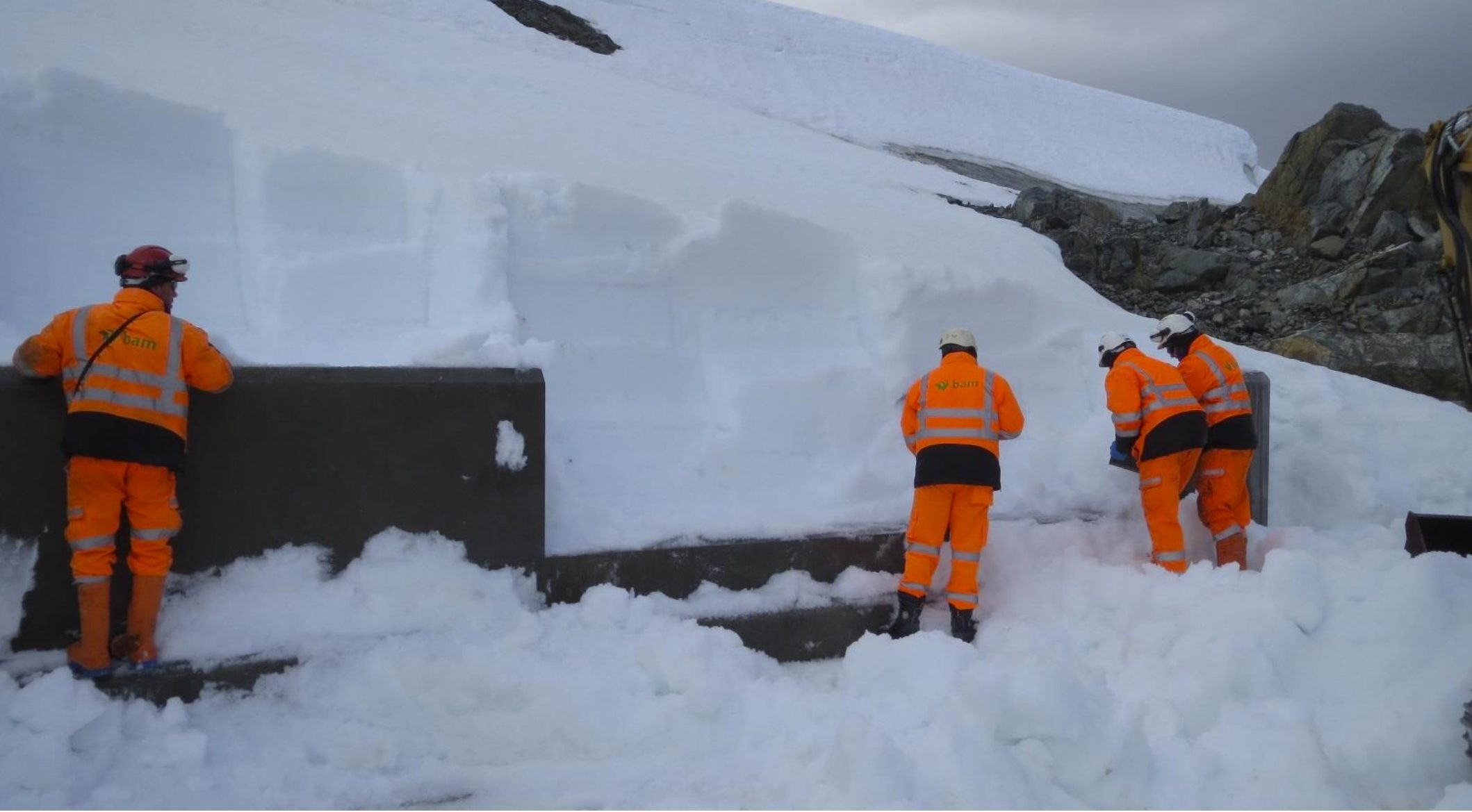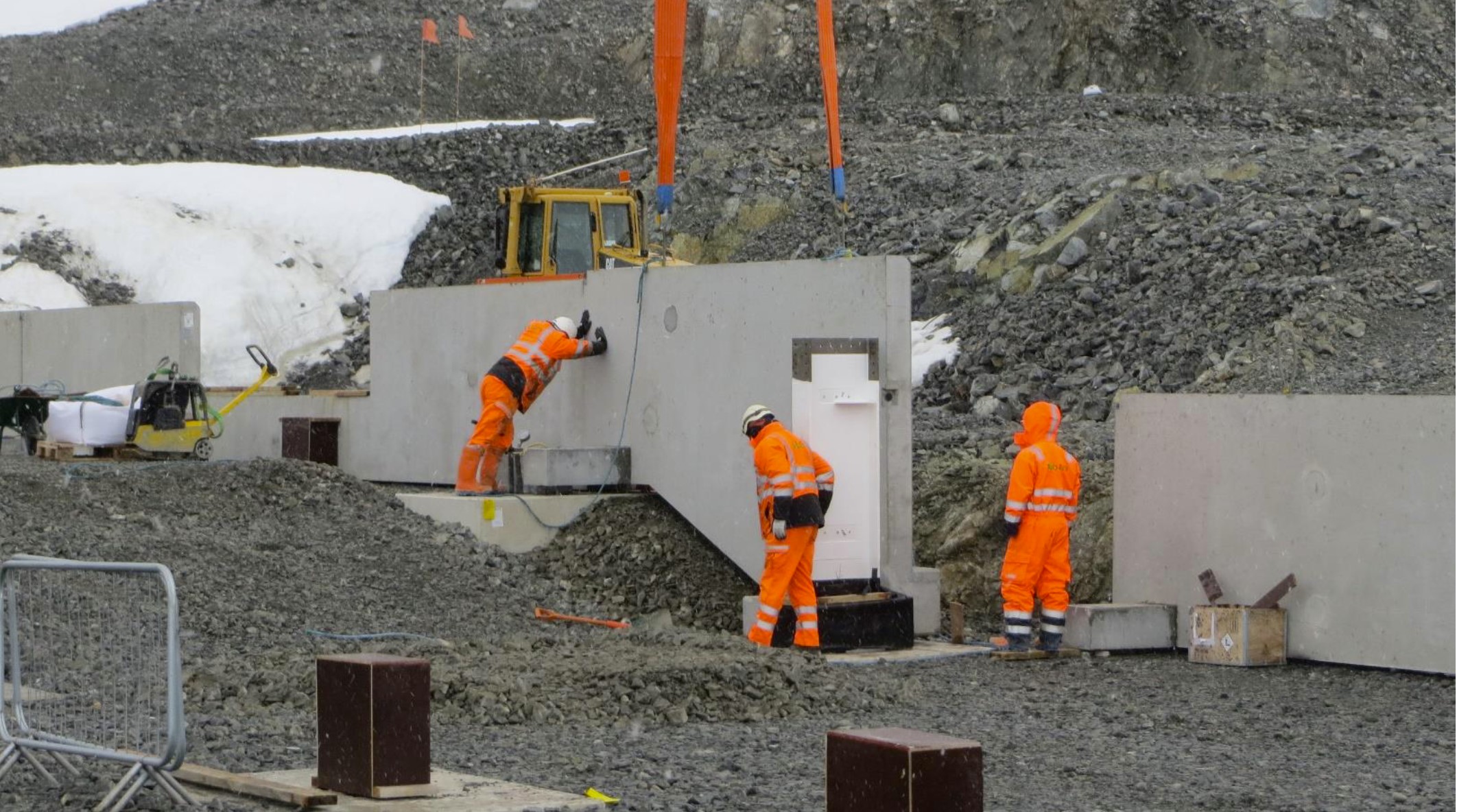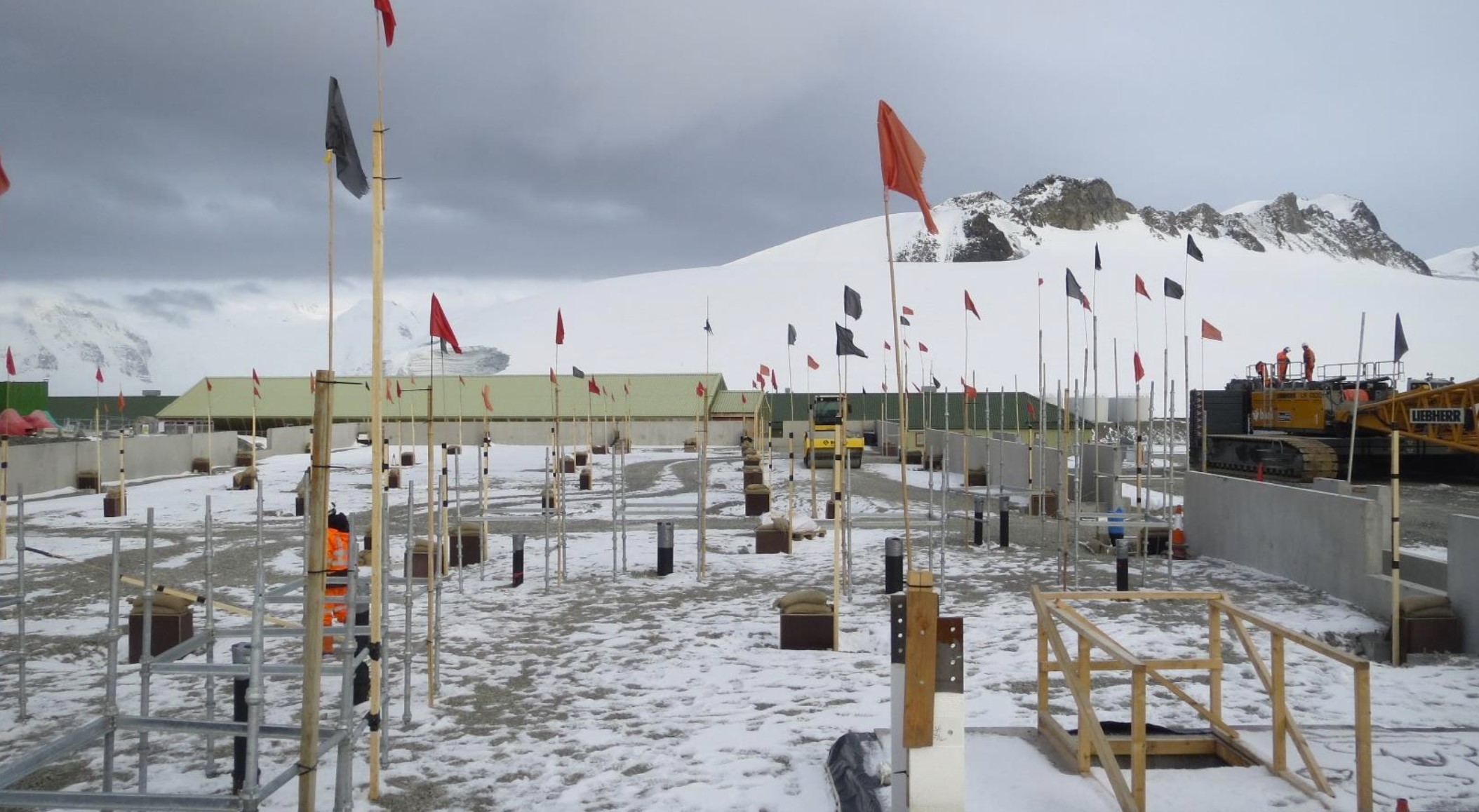Challenges of Construction in Antarctica
12 March, 2021 Rothera
Christopher Robert Lloyd, Site Supervisor for Ramboll, is currently working in Antarctica constructing the new scientific support facility at Rothera, the Discovery Building. He travelled to Antarctica in December 2020 and has tackled several challenges this season to complete the groundworks and perimeter wall of the new Discovery building. Here he reflects on traveling to Antarctica during a global pandemic, working in a sub-zero building site and life on a remote scientific research station.
No-one ever said that constructing a new 4,500m² building in Antarctica was going to be easy. Let’s start with the design. There’s really no such thing as a ‘standard’ polar laboratory to copy from, and the building must incorporate an aircraft control tower, a snowplough and skidoo garage, and facilities to make fresh water and electricity for the entire station. There aren’t many buildings in the world that can do that, or anything similar. Furthermore, the station has to be completely self-sufficient if needs arise: a field workshop may have to double as a dining room one year or, if the worst comes to the worst, a field hospital in another.

In remote environments space and equipment is at a premium, so everything in the building must have a purpose, and every space has to be flexible in order to deal with changing needs season to season. Every year different people from research institutes around the world come to work in Rothera, from first-time visitors to polar science veterans. Every package of science equipment for monitoring meteorological conditions, ocean wildlife or the environment is a different shape, with different power and connection needs.
But here we are. 67° south of the equator with a construction team of 23 people; 5,000 tonnes of concrete, steel and machinery; and a ten-week programme of work to complete before the season turns and we have to head north again. It’s a tall order.
Snow clearance and coping with winter conditions

Let’s talk about snow. If you’ve had to clear your driveway or garden path this winter in the UK then you’ll know it’s hard work to move, heavy to lift and you still have to put it somewhere out of the way. Welcome to Antarctica where you have to do that for an area the size of a small town, and when you’ve cleared the snow it still keeps coming.
Fortunately, this is not our first rodeo. Civil engineering teams have been working on site in Rothera every summer for the last four years, and while we’ve been restricted to a much small number of people this year, many are construction veterans who have been keen to return. This is my first visit; and already I hope it will be one of many.
Constructing the new Discovery Building amid scientific research

With the construction team working twelve-hour shifts every day moving earth, installing the structural foundations, and digging trenches for the building’s services, it’s almost possible to forget that Rothera is so much more than another construction site. Alongside us are over one hundred other scientists, engineers and technical staff working to support the main purpose of the BAS presence in Antarctica: science research.
Every day in Rothera is busy: weather balloons are launched, diving teams recover test equipment from the sea nearby, and the small fleet of BAS aircraft take off or return from other stations deeper in Antarctica where research is carried out in even more extreme environments. Construction pauses when ships bringing food, materials and personnel arrive at the newly constructed wharf, and then again when they depart to take people home.
The nature of the remote environment brings a new perspective to any project, in terms of property and of people. In the case of the former, every single item needed to construct the new building has to be transported 9,000 miles (almost 15,000km) to the site, and there is no way to send for spare parts if you run out! Many of the materials used for this stage of the foundations were moved to Rothera over a year ago, carefully packed in containers until they were needed.

For the latter, the trip is equally long – due to the COVID situation the construction team will only spend ten weeks on station, but normally people work in Antarctica for a six-month season. Those staying to keep the station running over the Austral winter (May to August) stay three times as long.
As the sunset each day gets earlier and nights get longer, we’re approaching the end of our time here. The team have made tremendous progress on the Discovery Building this season. There are no fanfares, no grand milestones or celebrations[1] – working out here is a marathon, not a sprint, and I’m definitely looking forward to this year’s finish line.
[1.] Getting all the perimeter wall foundations completed is a big milestone and a point of significant progress, and we’re all pretty proud of it. But we’re professionals, so we don’t make a big deal of it!
Find out more about this year’s construction programme and the Antarctic Infrastructure Modernisation Programme.